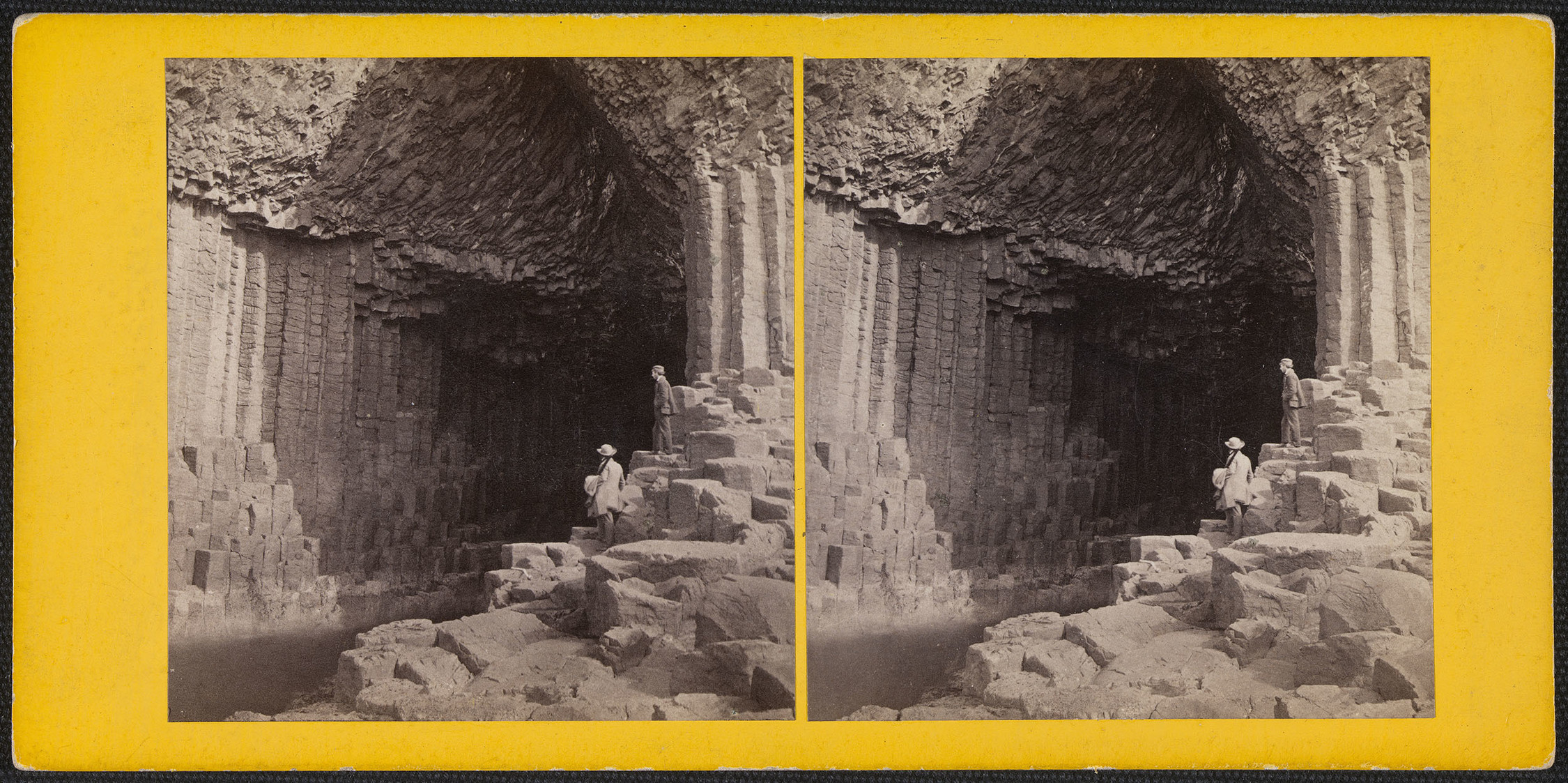
The wildest districts of Scotland
George Washington Wilson produced some of the first photographic souvenirs of Scotland
Staffa
A small island measuring two miles in circumference, Staffa is located eight miles from Mull in the Inner Hebrides. In 1860, during his photographic excursion to the west coast of Scotland, Wilson spent a day photographing on the Island of Staffa with his friend George Walker. Walker encouraged Wilson in his endeavours and became one of the main distributors of Wilson’s photographs from his bookshop in Aberdeen. These included many of the stereoscopic photographs taken on Staffa in 1860. Walker wrote about how many publishers would ‘willingly have given him £15 each’ for his photographs, ‘while they were worth far, far more to him’. The pair were rowed to the island by the local boatman, Sandy Macdonald, and Wilson concentrated on taking views of the cavernous splendour of Fingal’s cave with its vast basaltic columns. In testament to the accuracy of his photographic skills, Wilson took 24 exposures of which only one was spoilt.
Fingal’s Cave attracted writers and composers including Felix Mendelssohn, who composed his Hebrides Overture in 1830 after visiting Staffa in 1829. William Wordsworth and John Keats were also inspired to write literary eulogies to the cave in response to its grandeur. The cave was named after Fingal, the eponymous character of an ‘ancient epic poem’ written in 1762 by James Macpherson (1736–96). The poem was purportedly based on the works of Ossian, a legendary Gaelic lyricist, and the publication of these works helped reinforce values of Scottish identity. The cave is otherwise known as the ‘melodious cave’, perhaps justifiably when Walker and Wilson observed a group of tourists who, when rowed into the mouth of the cave became ‘awed and solemnized’, giving a spontaneous rendition of God Save The Queen.







